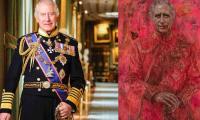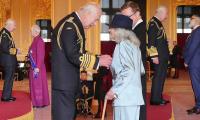Wednesday was the last day of Layla’s short time on Earth. She was antsy and restless since morning probably because she was seeing too much blood on the streets around her, said 25-year-old Bilal*.
She was a pale white and with just two teeth, she couldn’t be older than two years on the day she was sacrificed, said Bilal whose family had bought her for a joint Qurbani with another family just three days before Eid from a cattle farm in Malir.
Inspired from the epic folk tale of Layla Majnun, Bilal had named her Layla because, to him, she resembled the tale’s tragic heroine. “She was made to be fallen in love with at first sight,” he said recalling the day they bought her, while looking over a group of butchers working on her remains on Wednesday.
According to Muslim belief, Layla, the cow, died for a good cause – the ritual sacrifice asked of Muslims. But for the two families that owned her, Layla died for an even nobler cause – intersect harmony in a time of discord and intolerance.
“She lived and died to promote peace,” said Bilal’s father Muntazir Mehdi*, whose family co-owned Layla with the family of Ghulam Rasool*. “She became a star to guide people looking for the meaning of life,” said Rasool.
Mehdi is Shia while Rasool is Sunni. For years they have been buying an animal together and sharing the Qurbani ritual as a sign of peace and tolerance. “We don’t care what people will say about it,” said Bilal. “We are convinced with our offering to Allah.”
According to him, the two families have been doing this for the past 10 years and no one from the neighbourhood had ever raised any objections, at least directly to them. The families plan to continue doing it until either one of them is in a position to purchase the whole cow by themselves.
According to popular belief, any large sacrificial animal can be divided into seven shares. How do the families deal with that? Bilal explained that it’s all done with mutual understanding. “Sometimes, we take the most shares and other times they do.”
The cow hide is also an important part of the sacrifice. Since it is a major source of income for welfare organisations and charitable institutions, in the past, there have had been murders and violent conflicts over its sourcing.
The two families have a set formula to avoid the conflict on where the hide would go. They take turns. This year, Bilal’s family decided where the hide would be donated. Next year, Rasool’s family will get the choice.
Layla’s hide went to Madinatul Ilm Imambargah. Last year, when it was Rasool’s family’s turn, the hide had gone to Al Mustafa Hospital. The Muttahida Qaumi Movement has also been a recipient twice or thrice, said Bilal, explaining that they were never forced to donate, instead, the local sector in-charges had requested since they knew both families well.
According to him, Layla was not at ease on Eid day. “By the time our butcher arrived, she had had enough of the blood on the streets,” he said. “That’s why Islam says don’t slaughter an animal in front of other animals.” He added that it took time for her to calm down. They gave her some water and made her at ease before going in for the slaughter.
The two families hoped that their sacrifice achieved what they were hoping for. For now, the death of Layla, the many before her and the many after her, will continue to be a beacon of hope for a tolerant and peaceful society.
*Names changed to protect privacy
The gas meters can be seen in this picture. — APP/FileIn its ongoing efforts to substantially control gas theft...
A representational image shows an ambulance at an incident site. — AFP/FileTwo people sustained injuries in separate...
A Pakistan Army doctor provides essential medical treatment to patients during the medical camp. — ISPR...
Sindh Minister for Information, Transport & Mass Transport Sharjeel Inam Memon addresses media persons at the press...
This representational image shows the gavel in a courtroom. — Unsplash/FileA sessions court has dismissed the...
Jamaat-e-Islami MPA Mohammad Farooq speaks during an event on May 6, 2024. — Facebook/Muhammad FarooqJamaat-e-Islami...







